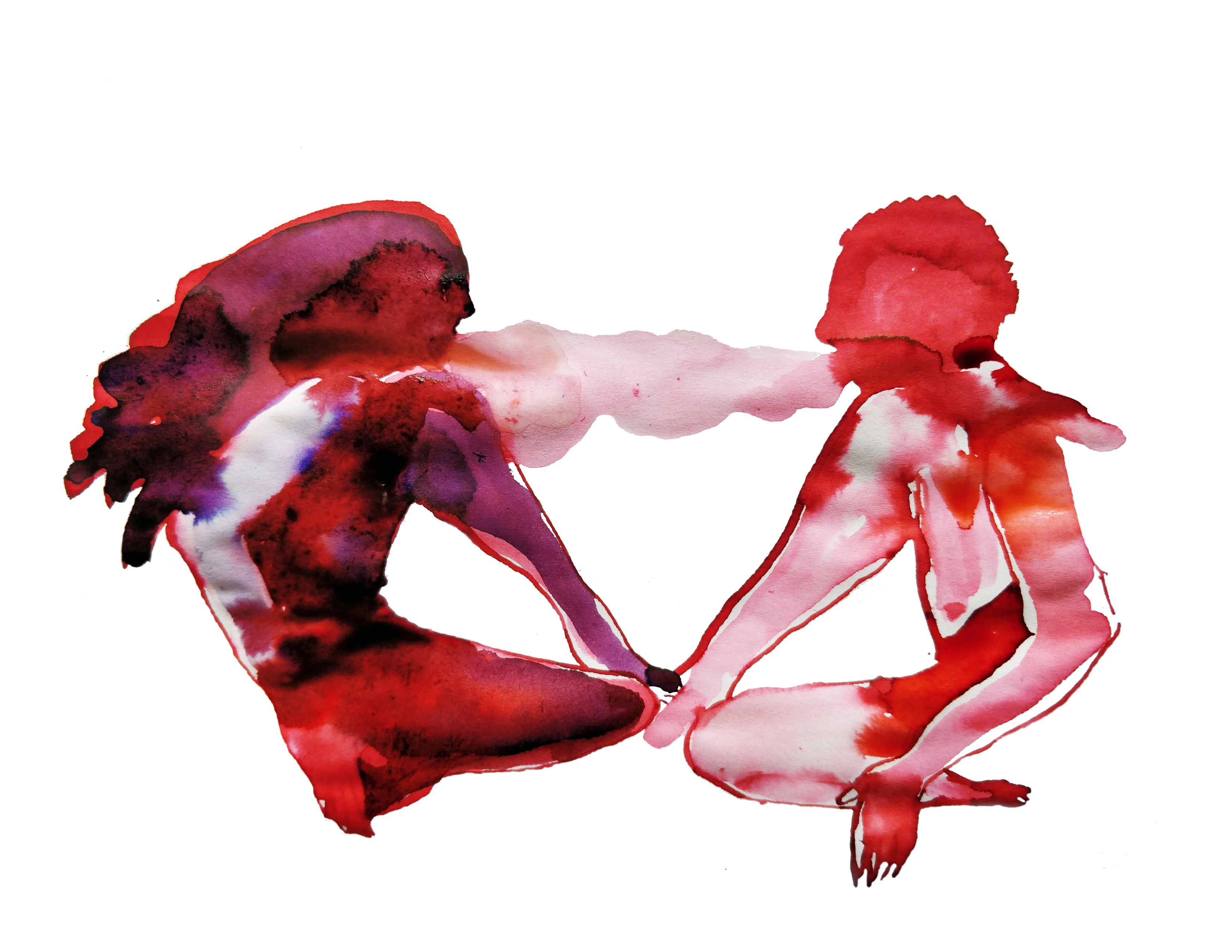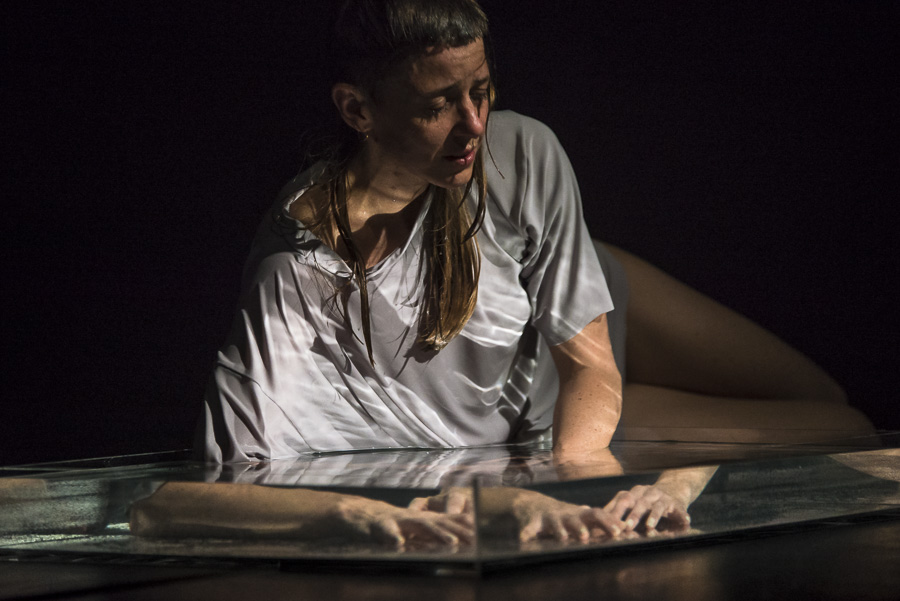12 Nov 2019
Interview
RHIANNON NEWTON: A SOFTNESS OF COMMUNICATION
Rhiannon Newton is a performer and choreographer from Australia. She has been a resident at HIAP from the beginning of September 2019. During her time in Helsinki, Rhiannon has been working on a project titled Long Sentences and collaborating with local artist, Vidha Saumya. Together they are presenting a series of workshops as part of Baltic Circle festival. Rhiannon will draw on these processes in a short solo performance that will be a part of HIAP’s own Open Studios event on the 15th of November.
Rhiannon and Vidha first were introduced by Baltic Circle’s Satu Herrala in May 2019, and they have been communicating since then, getting to know each other via Skype meetings first, then in person. The starting point of the collaboration has been how thoughts and ideas gather around different forms of dialogue, while focusing on things that feel good; a softness and openness of communication and exchange.
There are two ways of reading the title of the project, Long Sentences. A long duration is of course implied, but also a complexity of language, a complex linguistic structure which can be used as a way of thinking and being in the world. The work deals with language, communication, slowness, softness and also environmental issues as well as the need to pay attention and respect one another and our surroundings.
Histories and memory are also important themes in Rhiannon’s work. As an artist she is always looking into the future, planning and imagining. In order to successfully imagine the future however, she also chooses to dedicate some time to the past, as memories form the material an artist has to work with.

Long Sentences. Drawing by Vidha Saumya.
AA: You are currently working with local artists and Baltic Circle. What are you collaborating on?
RN: During my time here at HIAP I am developing a project call Long Sentences. While I am here, I am meeting regularly, having conversation and exchanging practices, with Vidha Saumya, a wonderful poet and visual artist based here in Helsinki. Together, as a part of Baltic Circle festival and in collaboration with UniArts, we are hosting a series of workshops under this title of Long Sentences. In the series we share processes relating to our respective work in writing, drawing and choreography that support practices of paying attention and thinking in longer durations.
I paste here the workshop description because it perhaps more eloquently evokes what the workshop series is about.
Long Sentences: Rhiannon Newton and Vidha Saumya
Held loosely by continuous threads, conversations meander and swell to encompass many perspectives. In something like the movement toward a well, thoughts journey and gather in places of shared concern. Slowly, together, we resist familiar emphasis, practice more gradual speeds and nourish feeling in place of form. Propelled by a back and forth motion, something that might be described as a feminist practice for paying attention, creates temporary spaces for thinking in longer durations.
The name, Long Sentences, comes from a short piece of writing by Ursula LeGuin called ‘Introducing Myself’, in which she describes long sentences as ‘unmanly’, like ‘life sentences that tend to go on and on, all full of syntax, qualifying clauses and confusing references and getting old”. In my practice I am thinking about long sentences as both a way of situating our thinking and acting in longer timescales and more complex webs of relation. Long sentences feels like a useful format for ‘staying in the trouble’ (as Donna Haraway says) and feeling the durations, personal or planetary, which our actions commit us to.
AA: Repetition and change are mentioned as central to your practice. Repetition forces both the performer and the viewer to focus, as it exposes every detail again and again. What is the relationship between repetition and change? Does repetition bring on change?
RN: Yes, I think there are very interesting relationships between repetition and how we make sense of the world around us. My interest in repetition has moved toward processes of maintenance, care and how we remember, acknowledge and pay respect to things that make us up. In dance, or the body, as soon as you try to repeat something it becomes quickly clear how impossible such a task is. Conversely, the body is so shaped by habit, training and culture, that what might feel very spontaneous, or instinctive, often reveals itself to be the most deeply habituated. My interest in repetition has been about tapping into more gradual processes of change, such as the slowly tiring body, or the gradual transformation of a movement into something shaped more naturally by the weight and forces acting into it.
As for bringing on change sure, of course. Repeating allows you to notice what has stayed the same and what hasn’t. Repeatedly doing something can be very damaging, it can also be very pleasurable, it can also feel good because it is familiar. Repeating things has got humans into a tricky situation, but it is very much in our nature. I have also been working with links between inertia and sensation, how tendencies to reproduce things are often guided by feelings of pleasure, familiarity and desire.

We Make Each Other Up by Rhiannon Newton. Image by Gregory Lorenzutti.
AA: Memory is also a theme in your work. For a performer and choreographer, memory is very much tied to the medium as well. You need to remember the choreography. What happens when a dancer forgets their choreography?
RN: My interest is memory is how it is a part of what constitutes the material of the body, or a collective situation. When we make choices, or are attracted to something, memory colours and plays a part in the choice. I am interested in formats that reveal this kind of subjectivity.
At the moment I work a lot memory as a kind of filter. Often at the end of session of working I will do an exercise where we track the conversations had, or the events taken place. It is fascinating how memory pools around sensorial aspects of a situation, as well as unanswered or problematic things, and curiosity, the things that people find exciting or interesting. These are very obvious things to follow, but drawn out in this way, also become useful scoring directives.
In a recent process I asked people involved in and associated with the project to offer a text that reflected their relationship to the work. I did this because often the first thing people already did when I spoke to them about the ideas and processes in the work was to offer a text as a reference. Anyway, upon gathering the collection of texts together, a really fascinating picture of very diverse points of view on the work was drawn. So, I guess memory to me is not so much about remembering sequences or events in a singular kind of way, but rather another process through which we can attend to the different things feeding into and making up the situation we find ourselves working with.
AA: Linguistic questions or simple words can trigger memories. How close are dance and language in your practice? Apart from dance in itself being an expressive, universal language.
RN: I have been working with text in my work for some time. Text / language is interesting for me because of the clarity and speed with which you can be referential. In my recent work We Make Each Other Up I worked a lot with quotes from literature that inspired and sat alongside the process of making the work. These quotes were kind of threaded amongst the choreographic material, but they were spoken very slowly, so that their meaning kind of dissolved upon its annunciation and became a little more likely the choreographic material, thick and textured, leaking into the environment around them. I guess my interest is in how there is perhaps different ways that words and movements speak to us and to allow audiences to get a little lost in whether it is a word or movement that has given rise to something making sense for them.
Read more:
Long Sentences in Baltic Circle: https://balticcircle.fi/en/events/rhiannon-newton-and-vidha-saumya-long-sentences/
HIAP Open Studios: https://www.hiap.fi/event/hiap-open-studios-autumn-2019/
Rhiannon’s website: http://rhiannonnewton.com/
Vimeo collection: https://vimeo.com/showcase/6186347
Vidha Saumya: https://vidhasaumya.com
Rhiannon Newton’s residency is realised with the support of Australia Council for the Arts.
